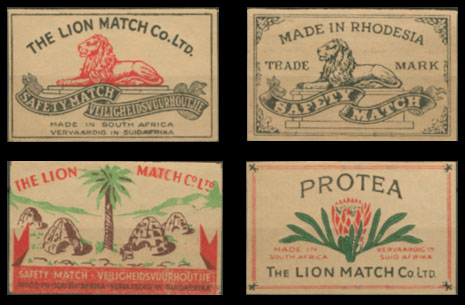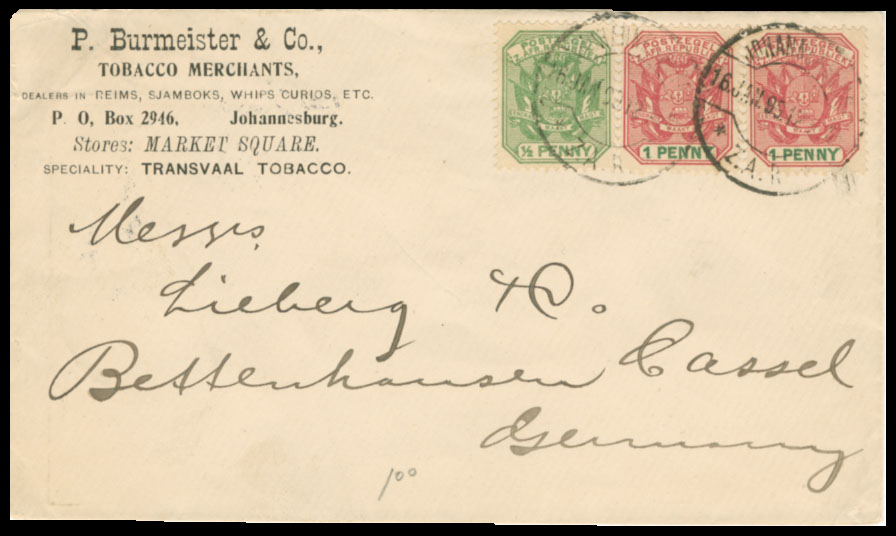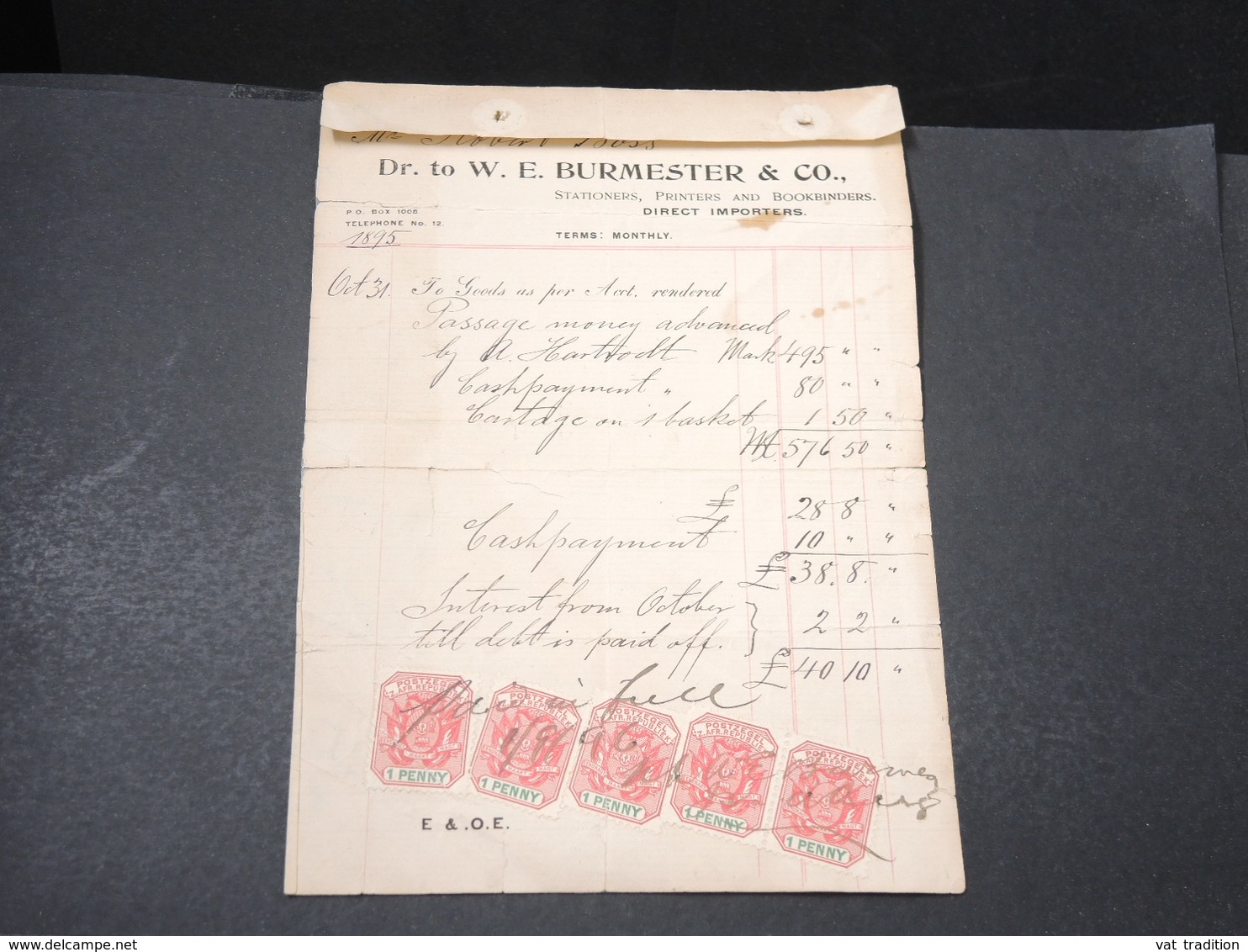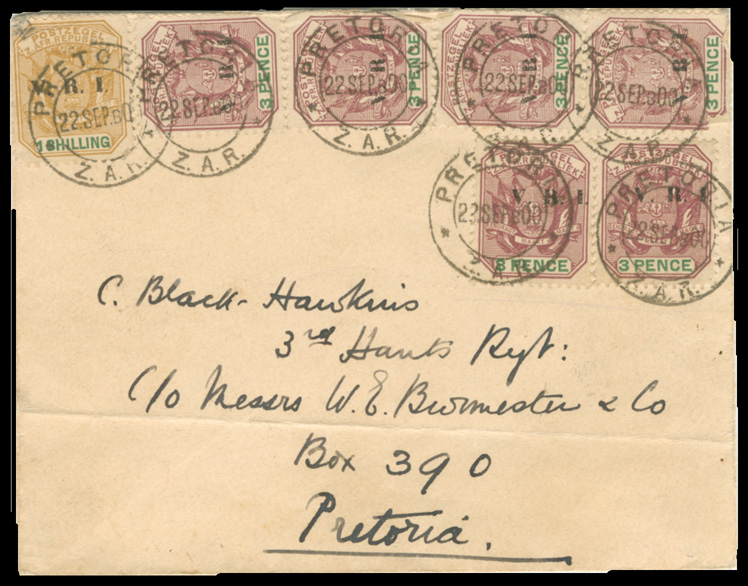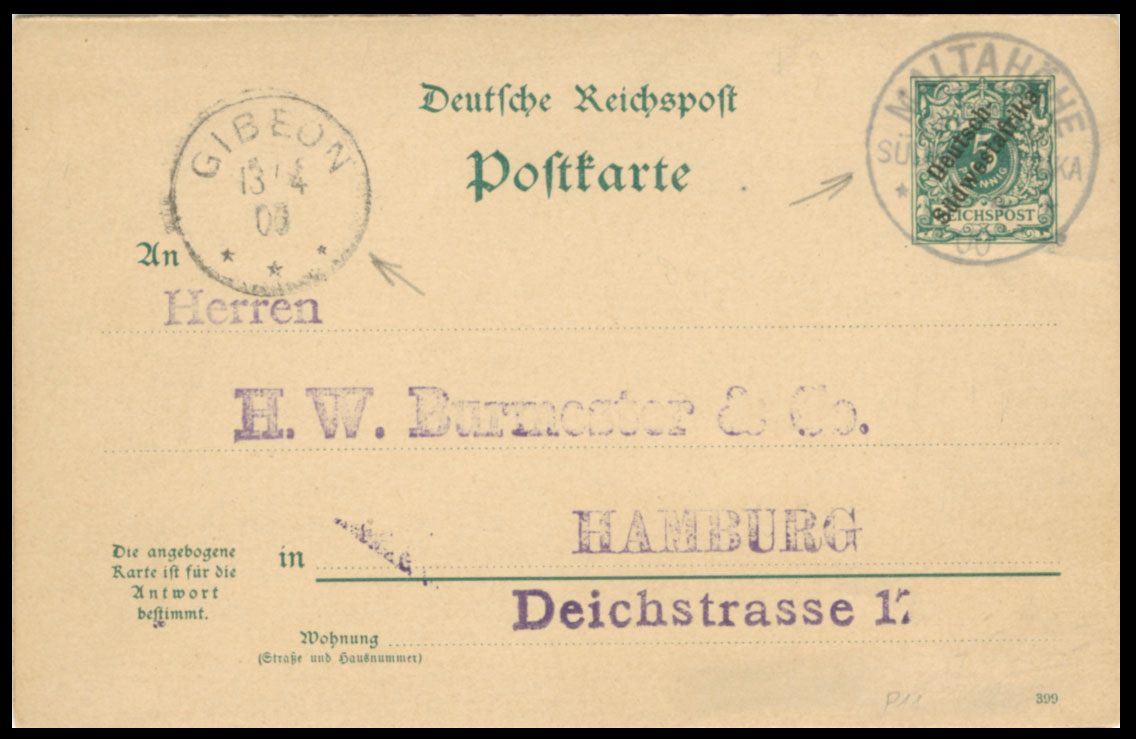IMAGES OF THE MONTH - MAY 2020 No. 1 - Lion Matches
Quote from Steve on May 4, 2020, 10:20 amImage of the Week No. 1 (Below)
Lion Match box labels will mean little to those who were not born in South Africa. For my part, I almost certainly used them when I was awarded my Boy Scout Fire-making badge and later when I became a delinquent teenage pyromaniac, later still a cigarette smoker and lastly, and most proudly, a competent braaier. They were THE match, THE only match. The reason for including Lion Matches this week is not only in part nostalgia for the matches that lit millions of South African camp and kitchen fires and cigarettes and pipes of 'twak' (Afr. 'tobacco'), but also because, if you go to Jamie Smith's 'How South Africa Won the War', Part 3, The Invasion of Italian East Africa, there is a lovely photo of "South African Troops in Kenya" preparing food around a fire. The soldier closest to the camera is sitting on a huge box that is printed 'Lion Match Co.' So, it wasn't only South African gold, Castle lager, Sailor Malan and Pat Pattle that won WW2 but simple stuff like 'vuurhoutjies', (Afr. 'little fire woods'). It was also Lion matches that Winnie Mandela was most likely referring to when she notoriously said "with our boxes of matches, and our necklaces, we shall liberate this country!"
Image of the Week No. 1 (Below)
Lion Match box labels will mean little to those who were not born in South Africa. For my part, I almost certainly used them when I was awarded my Boy Scout Fire-making badge and later when I became a delinquent teenage pyromaniac, later still a cigarette smoker and lastly, and most proudly, a competent braaier. They were THE match, THE only match. The reason for including Lion Matches this week is not only in part nostalgia for the matches that lit millions of South African camp and kitchen fires and cigarettes and pipes of 'twak' (Afr. 'tobacco'), but also because, if you go to Jamie Smith's 'How South Africa Won the War', Part 3, The Invasion of Italian East Africa, there is a lovely photo of "South African Troops in Kenya" preparing food around a fire. The soldier closest to the camera is sitting on a huge box that is printed 'Lion Match Co.' So, it wasn't only South African gold, Castle lager, Sailor Malan and Pat Pattle that won WW2 but simple stuff like 'vuurhoutjies', (Afr. 'little fire woods'). It was also Lion matches that Winnie Mandela was most likely referring to when she notoriously said "with our boxes of matches, and our necklaces, we shall liberate this country!"
Uploaded files:Quote from yannisl on May 6, 2020, 7:07 am
Some cigarettes to go with the matches.
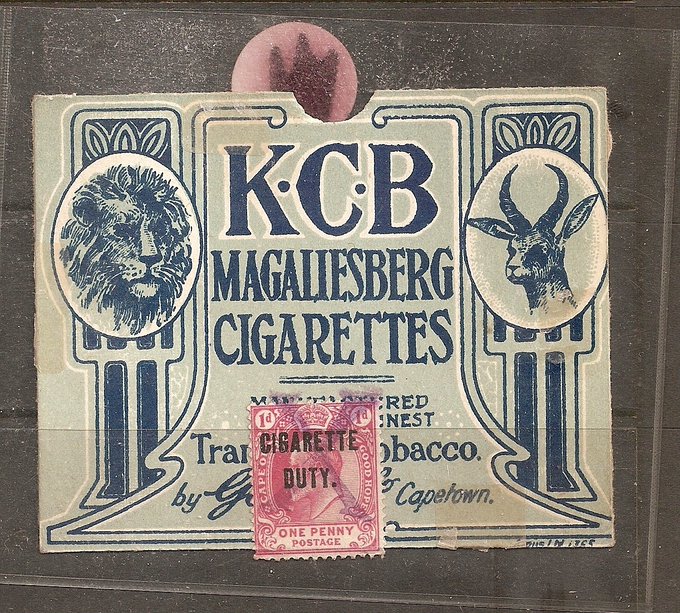
Some cigarettes to go with the matches.
Quote from Steve on May 6, 2020, 6:38 pmThanks for this unexpected delight, Yannisl. I'm glad you like the posts, Stratman.
Here is a cover from a display I am building up on the East London general dealer Burmeister & Co. who left a hoard of some 50,000 Union-era covers. (Not to be confused with the earlier COGH Burmester of Cape Town.) This Burmeister cover from 16 JAN 1899 is the earliest one I have found. I am absolutely delighted with it because it provides my display with a ZAR starting point for the Burmeister saga in East London. Tobacco is at the heart of the tale.
Paul Burmeister was born in 1865, the son of a hotelier, in Heide, Holstein, close to the Danish border. He arrived in East London, South Africa, in April 1892. The attraction of the Eastern Cape was its large community of German settlers descended from mercenaries who had signed up to fight in a German Legion for the British against the Xhosa. While there he met Emilie Katherina Grunow, a music teacher who would later become his wife. Her grandparents had arrived in East London with German settlers aboard the "La Rochelle" in 1858. Emilie gave Paul an urgent need to make his fortune in South Africa. He said goodbye to her and travelled by train to the 'City of Gold' in the Boer's ZAR (Zuid Afrikaansche Republiek). In Johannesburg, Paul became one of some 60,000+ 'Uitlanders' (Afr. foreigners without land). By 1895 Paul was trading as "P. Burmeister & Co, Tobacco Merchants & Commission Agents", in premises on the corner of Market / Sauer Streets, near or opposite the later Africana Library. Among the products he advertised were a "Speciality - Transvaal Tobacco - Real Magaliesberg", also "Riems (leather thongs), Sjamboks, (cattle whips), Curios and Karosses (sheep skins)". In November 1896 Paul returned to the Eastern Cape to marry Emilie in Stutterheim. The marriage register gives his address as "Johannesburg S.A.R." (South African Republic) and the occupation of his father-in-law, Ernst Grunow, as "Miller". In mid-1899 Emilie discovered she was pregnant with their first child. Joy turned to despair when it became obvious that war with Britain had become inevitable. The departure of Johannesburg's Uitlander population meant that Paul's business prospects were poor. He decided to put Emilie and his future family first, even it it meant starting all over again in the rural backwater of the Eastern Cape. Some time before the 11th October 1899, when the Boers declared war on the British Empire in a desperate attempt to gain an advantage through a pre-emptive attack, Paul and his expectant wife left Johannesburg. Family legend has it that Paul and Emilie caught the last train out. This would have placed Emilie in a very difficult situation as by that time there were no longer enough passenger coaches. Only open cattle trucks were available. Family legend has it that all Paul could take with him were eight bags of tobacco. I imagine this was his speciality "Transvaal Tobacco - Real Magaliesberg". Three months after Paul and Emilie arrived in Stutterheim, their first son, Wilhelm Albert Burmeister, was born on the 22nd January 1901. It was the eve of the Battle of Spioen Kop. Paul found himself selling his tobacco and working for his father-in-law. Burmeister and Co was still only the germ of a distant idea.
Thanks for this unexpected delight, Yannisl. I'm glad you like the posts, Stratman.
Here is a cover from a display I am building up on the East London general dealer Burmeister & Co. who left a hoard of some 50,000 Union-era covers. (Not to be confused with the earlier COGH Burmester of Cape Town.) This Burmeister cover from 16 JAN 1899 is the earliest one I have found. I am absolutely delighted with it because it provides my display with a ZAR starting point for the Burmeister saga in East London. Tobacco is at the heart of the tale.
Paul Burmeister was born in 1865, the son of a hotelier, in Heide, Holstein, close to the Danish border. He arrived in East London, South Africa, in April 1892. The attraction of the Eastern Cape was its large community of German settlers descended from mercenaries who had signed up to fight in a German Legion for the British against the Xhosa. While there he met Emilie Katherina Grunow, a music teacher who would later become his wife. Her grandparents had arrived in East London with German settlers aboard the "La Rochelle" in 1858. Emilie gave Paul an urgent need to make his fortune in South Africa. He said goodbye to her and travelled by train to the 'City of Gold' in the Boer's ZAR (Zuid Afrikaansche Republiek). In Johannesburg, Paul became one of some 60,000+ 'Uitlanders' (Afr. foreigners without land). By 1895 Paul was trading as "P. Burmeister & Co, Tobacco Merchants & Commission Agents", in premises on the corner of Market / Sauer Streets, near or opposite the later Africana Library. Among the products he advertised were a "Speciality - Transvaal Tobacco - Real Magaliesberg", also "Riems (leather thongs), Sjamboks, (cattle whips), Curios and Karosses (sheep skins)". In November 1896 Paul returned to the Eastern Cape to marry Emilie in Stutterheim. The marriage register gives his address as "Johannesburg S.A.R." (South African Republic) and the occupation of his father-in-law, Ernst Grunow, as "Miller". In mid-1899 Emilie discovered she was pregnant with their first child. Joy turned to despair when it became obvious that war with Britain had become inevitable. The departure of Johannesburg's Uitlander population meant that Paul's business prospects were poor. He decided to put Emilie and his future family first, even it it meant starting all over again in the rural backwater of the Eastern Cape. Some time before the 11th October 1899, when the Boers declared war on the British Empire in a desperate attempt to gain an advantage through a pre-emptive attack, Paul and his expectant wife left Johannesburg. Family legend has it that Paul and Emilie caught the last train out. This would have placed Emilie in a very difficult situation as by that time there were no longer enough passenger coaches. Only open cattle trucks were available. Family legend has it that all Paul could take with him were eight bags of tobacco. I imagine this was his speciality "Transvaal Tobacco - Real Magaliesberg". Three months after Paul and Emilie arrived in Stutterheim, their first son, Wilhelm Albert Burmeister, was born on the 22nd January 1901. It was the eve of the Battle of Spioen Kop. Paul found himself selling his tobacco and working for his father-in-law. Burmeister and Co was still only the germ of a distant idea.
Uploaded files:
Quote from yannisl on May 7, 2020, 7:09 amAbsolutely fascinating story. Please post more images and details once you are more into writing it up. I have a lot of Burmester (COGH) covers but never realized there was a similarly named person P. Burmeister. I have a few union covers but mostly collect COGH.
Absolutely fascinating story. Please post more images and details once you are more into writing it up. I have a lot of Burmester (COGH) covers but never realized there was a similarly named person P. Burmeister. I have a few union covers but mostly collect COGH.
Quote from Johan64 on May 8, 2020, 5:29 pmDear Steve, a fascinating story indeed. I see on Delcampe items for sale with the name Dr to W.E.BURMESTER & Co. Would there be a relationship in some way?
Dear Steve, a fascinating story indeed. I see on Delcampe items for sale with the name Dr to W.E.BURMESTER & Co. Would there be a relationship in some way?
Uploaded files:Quote from Steve on May 9, 2020, 10:48 amHi Johan, thanks for posting a very useful piece of info which has cleared up a mystery for me. I have been plagued this morning by failing to find a very relevant postcard that says something like "a reminiscence of 95". It shows a body of men marching down a street which I always thought was Johannesburg. I believe they are Irishmen out supporting the Boers / ZAR at the time of the Jamieson Raid. Many of them would later join the Irish Brigade under Colonel John Blake and Major John McBride (another long, long story!) Of significance, the men are marching past W BURMESTER's shop. So, perhaps this scene was photographed in Pretoria, as per the address on your scan, rather than Johannesburg. However, I note that the PO Box address on Pretoria my cover below is different t the address on your posting. So, perhaps there was also a W BURMESTER based in Johannesburg. When I find the postcard, I will post it here.
In answer to your question, "No, they are different". The company I refer to in East London is BURMEISTER & CO. The scanned document that you posted is from W E BURMESTER (no 'I'). (This is a common enough German name derived from Burgermeister or Mayor.) Your guy, W E Burmester, is possibly related to the EMILE BURMESTER & CO. in Cape Town. I always wondered if they were related and if W E Burmester had gone to Johannesburg to either open a branch there or seek his own fortune. BUT now, further to your posting the above item, I do not think they were related. This is because E BURMESTER in Cape Town was a top-end general dealer in lamps, photographic materials, scientific instruments and jewellery whereas the document you supplied shows W E Burmeister to be a stationer, printer and bookbinder, an entirely different commercial venture. There would be no reason for them to have a commercial relationship. Also, Robin Pelteret's excellent coverage, see below, does not support the argument that they were related.
If you want to know a little more about E BURMESTER in Cape Town, see the PDF in '"Sop... Daar kommie Alabama".
If you want to read the definitive history of E BURMESTER & CO, see Robin Pelteret's excellent biography of the company. Robin was a prefect at Pinelands Blue School when I was a boy. He once put me in detention. I have not forgotten that humiliation! (It was almost certainly deserved.) I have now forgiven him enough to refer you to his website in a fit of philatelic fraternity.
See: http://www.pelteret.co.za/content/000160/It-s-just-an-ordinary-envelope-the-story-of-E.-Burmester-of-Cape-Town.pdf
Hi Johan, thanks for posting a very useful piece of info which has cleared up a mystery for me. I have been plagued this morning by failing to find a very relevant postcard that says something like "a reminiscence of 95". It shows a body of men marching down a street which I always thought was Johannesburg. I believe they are Irishmen out supporting the Boers / ZAR at the time of the Jamieson Raid. Many of them would later join the Irish Brigade under Colonel John Blake and Major John McBride (another long, long story!) Of significance, the men are marching past W BURMESTER's shop. So, perhaps this scene was photographed in Pretoria, as per the address on your scan, rather than Johannesburg. However, I note that the PO Box address on Pretoria my cover below is different t the address on your posting. So, perhaps there was also a W BURMESTER based in Johannesburg. When I find the postcard, I will post it here.
In answer to your question, "No, they are different". The company I refer to in East London is BURMEISTER & CO. The scanned document that you posted is from W E BURMESTER (no 'I'). (This is a common enough German name derived from Burgermeister or Mayor.) Your guy, W E Burmester, is possibly related to the EMILE BURMESTER & CO. in Cape Town. I always wondered if they were related and if W E Burmester had gone to Johannesburg to either open a branch there or seek his own fortune. BUT now, further to your posting the above item, I do not think they were related. This is because E BURMESTER in Cape Town was a top-end general dealer in lamps, photographic materials, scientific instruments and jewellery whereas the document you supplied shows W E Burmeister to be a stationer, printer and bookbinder, an entirely different commercial venture. There would be no reason for them to have a commercial relationship. Also, Robin Pelteret's excellent coverage, see below, does not support the argument that they were related.
If you want to know a little more about E BURMESTER in Cape Town, see the PDF in '"Sop... Daar kommie Alabama".
If you want to read the definitive history of E BURMESTER & CO, see Robin Pelteret's excellent biography of the company. Robin was a prefect at Pinelands Blue School when I was a boy. He once put me in detention. I have not forgotten that humiliation! (It was almost certainly deserved.) I have now forgiven him enough to refer you to his website in a fit of philatelic fraternity.
Uploaded files:Quote from Johan64 on May 10, 2020, 4:24 pmSteve, I have email you a recent article in the Transvaal Philatelist relating to WE Burmester, where there are images of both Pretoria and Johannesburg addresses and related information.
Steve, I have email you a recent article in the Transvaal Philatelist relating to WE Burmester, where there are images of both Pretoria and Johannesburg addresses and related information.
Quote from Steve on May 11, 2020, 12:13 pmAs a result of this thread, I have received a scanned copy of an article, 'On the Record - Printed by W. E. Burmester & Co., Printers, Bookbinders and Rulers', that appears in the Transvaal Philatelist v.54, no.3, (204), November 2019.
This article sets out to "illustrate the diversity of W. E. Burmester & Co., whose sales and services became well-known throughout southern Africa". Fair enough. My response to this article is based on the limited information which was made available to me. Firstly, the company that is "well-known throughout southern Africa" is not the W. E. Burmester of the ZAR but the one in Cape Town which left a huge trove of era-defining COGH postal history to posterity. W. E. Burmester & Co. did no such thing. Doubtless, some of its covers exist but those that do represent just a small fraction compared to the legacy of the Cape Burmester & Co.
Obviously aware of the Cape Burmester, the writer begins immediately by conflating the Pretoria and Johannesburg W. E. Burmester & Co., with Burmester & Co., in Cape Town, an easy assumption for which no substantive proof is offered. What is offered by way of display is correspondence between these two companies which share the same, common enough German surname. It is important to note that they are not one company. They are two separate businesses, one constituted in the Cape and the other in the ZAR. The nature of the suggested commercial relationship between them is not explained. Nor do either company's letterheads show any reference to a head or branch office in Cape Town or Pretoria and Johannesburg. I would expect them to put a branch office on their letterheaded stationery. It adds to the prestige of the business. They did not do this for the simple reason that there was no association between them other than trade. Neither was a head office nor a branch of the other.
The writer describes "a matching envelope which was posted with a cheque during August 1891 to their store in Cape Town". I suggest that these two companies were separate commercial entities trading in similar but different lines of business and that the correspondence between them simply shows no more than that W. E. Burmester in the ZAR was buying imported goods from Burmester & Co. in Cape Town for resale in the ZAR. This article offers no proof that these stores are one and the same. It creates an association between these companies simply on the basis of a shared surname, one which is eminently well-known within South African philately. It is an easy assumption to make but a wrong one! Finally, the company in the ZAR is named after a W. E. Burmester. Emil Burmester, the founder of Burmester & Co. in Cape Town, had no father, brother, son or cousin with those initials.
Anyone interested in the history of Burmester and Co., the Cape company, should read Dr Robin Pelteret's well-researched article on the history of the company. Within it you will not find a single reference to a 'W. E. Burmester'.
As a result of this thread, I have received a scanned copy of an article, 'On the Record - Printed by W. E. Burmester & Co., Printers, Bookbinders and Rulers', that appears in the Transvaal Philatelist v.54, no.3, (204), November 2019.
This article sets out to "illustrate the diversity of W. E. Burmester & Co., whose sales and services became well-known throughout southern Africa". Fair enough. My response to this article is based on the limited information which was made available to me. Firstly, the company that is "well-known throughout southern Africa" is not the W. E. Burmester of the ZAR but the one in Cape Town which left a huge trove of era-defining COGH postal history to posterity. W. E. Burmester & Co. did no such thing. Doubtless, some of its covers exist but those that do represent just a small fraction compared to the legacy of the Cape Burmester & Co.
Obviously aware of the Cape Burmester, the writer begins immediately by conflating the Pretoria and Johannesburg W. E. Burmester & Co., with Burmester & Co., in Cape Town, an easy assumption for which no substantive proof is offered. What is offered by way of display is correspondence between these two companies which share the same, common enough German surname. It is important to note that they are not one company. They are two separate businesses, one constituted in the Cape and the other in the ZAR. The nature of the suggested commercial relationship between them is not explained. Nor do either company's letterheads show any reference to a head or branch office in Cape Town or Pretoria and Johannesburg. I would expect them to put a branch office on their letterheaded stationery. It adds to the prestige of the business. They did not do this for the simple reason that there was no association between them other than trade. Neither was a head office nor a branch of the other.
The writer describes "a matching envelope which was posted with a cheque during August 1891 to their store in Cape Town". I suggest that these two companies were separate commercial entities trading in similar but different lines of business and that the correspondence between them simply shows no more than that W. E. Burmester in the ZAR was buying imported goods from Burmester & Co. in Cape Town for resale in the ZAR. This article offers no proof that these stores are one and the same. It creates an association between these companies simply on the basis of a shared surname, one which is eminently well-known within South African philately. It is an easy assumption to make but a wrong one! Finally, the company in the ZAR is named after a W. E. Burmester. Emil Burmester, the founder of Burmester & Co. in Cape Town, had no father, brother, son or cousin with those initials.
Anyone interested in the history of Burmester and Co., the Cape company, should read Dr Robin Pelteret's well-researched article on the history of the company. Within it you will not find a single reference to a 'W. E. Burmester'.
Quote from Steve on May 14, 2020, 2:27 pmAs proof of my comment that 'Burmester' is a common German name, I found this complete two part reply-card from German South West Africa, Maltahohe via Gibeon '13 4 00' to Hamburg, in a box of clutter I was clearing up. It is pre-addressed to H W Burmester and Co. As I recall, I paid 75p for it. At the time I was very pleased with my purchase as it was accompanied by a postcard from Dar es Salaam, GEA, with a very nice clean strike of the datestamp. Two for £1.50. Happy days! As a long shot, perhaps this H W Burmester is related to W E (ZAR) and or E Burmester (COGH)?
As proof of my comment that 'Burmester' is a common German name, I found this complete two part reply-card from German South West Africa, Maltahohe via Gibeon '13 4 00' to Hamburg, in a box of clutter I was clearing up. It is pre-addressed to H W Burmester and Co. As I recall, I paid 75p for it. At the time I was very pleased with my purchase as it was accompanied by a postcard from Dar es Salaam, GEA, with a very nice clean strike of the datestamp. Two for £1.50. Happy days! As a long shot, perhaps this H W Burmester is related to W E (ZAR) and or E Burmester (COGH)?
Uploaded files:
